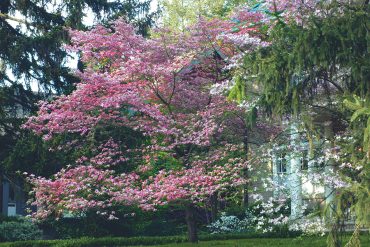Once thought impossible, today California turns out some of the most reliable Pinot Noirs in the world.
By Matthew Debord
HQ 110 | SUMMER 2020
The great state of California broke into the big-time world of wine in the 1970s, on the strength of two types of vino: Cabernet Sauvignon and Chardonnay. For the following two decades, those varietals ruled, although Merlot enjoyed a period of popularity in the 1990s.
The logic, from a winemaking perspective, was obvious: Cabernet is the most important red grape variety in the Bordeaux region of France, where the globe’s most respected and collectible wines come from. Chardonnay is, to vintners, a glorious blank slate, a white wine that responds to all sorts of winemaking tricks, especially oak-barrel aging.
Meanwhile, California more or less avoided the planet’s other legendary grape, the infamously temperamental Pinot Noir.
Pinot traces its lineage to Bordeaux’s rival region in France — Burgundy. If Bordeaux is the realm of stately chateaux and the noted wine “brands” of the 19th century — Chateau Lafite-Rothschild, Chateau Latour and so on, the “first growths” established in 1855 — then Burgundy was the land of stubbornly independent farmers. Bordeaux sought predictable annual excellence, while Burgundy accepted the whims of nature and, many years, produced unimpressive reds and whites, but in standout years completely blew Bordeaux out of the water.
While California successfully went head-to-head with the Bordeaux region of France in terms of quality, many of the Golden State winemakers were reluctant to try to compete with the highly respected Burgundy region. But a small group of Burgundy enthusiasts thought that maybe, just maybe, they could overcome the extreme variation in quality that had long beset them.
The upshot was that, in the 1980s and 1990s, California cracked the Pinot code and produced wines of staggering, reliable elevation, reinventing worldwide expectations for what Pinot could be.
One caveat: the California Pinots weren’t, and still aren’t, red Burgundies. The California version is typically richer and fruitier, with less of the hypnotic weirdness that has garnered Burgundy so many patient champions. Red Burgundies are lighter and more aromatically complicated, and they tend to come into their own only after years of bottle aging. If you want a more direct emulation of the Burgundian style, try Oregon Pinot Noirs.
What California achieved with Pinot Noir was, in the wine world, nothing short of astonishing.
Every decade, Burgundy-philes accepted eight years of green, weedy, fruitless wines for two years of blowout vintages that reorganized your brainwaves. But in California, given the incredibly favorable climate and highly modern winemaking technology, every year was a good Pinot year.
This sudden emergence of Pinot and Pinot connoisseurship was documented in a book, titled Sideways, and a hit movie of the same name.
The first notable Pinot I ever sampled was from a producer called David Bruce, which as it turns out was a winery that figured in a famous event, the so-called “Judgment of Paris,” a 1976 tasting that favorably pitted California wines against French ones; David Bruce supplied a Chardonnay.
But it was the Pinot I tasted in the 1990s that showed me what the California interpretation could be: rich, fruity, textured, layered. And yet, not jammy like some Merlots, and less heavy than many Cabs.
That wine was from Northern California, but curiosity led me to Hartley-Ostini’s The Hitching Post, a winery and restaurant in Santa Barbara that features in Sideways and whose assorted Pinots are an ideal introduction to the regional style, ranging in price from about $30 to $70.
These are some of the finest wines at these price points in not just the U.S., but the world.
Another Santa Barbara Pinot worth seeking out is Au Bon Climat’s entry-level bottling, which retails for around $25. Santa Barbara, by the way, has achieved unique status in the state’s winemaking community. Although the region is rather far south, a quirk of climate makes for incredible Pinots: hot, dry daytime temperatures are moderated by cool Pacific air that’s funneled into the vineyards, causing the vines to work hard while the sun shines but shut down at night. This fight for survival — “stress,” in winemaking terms — takes the grapes to a higher level of quality.
Finally, if you want to spend some more serious coin, Williams Selyem’s Sonoma Coast Pinot, at about $90, is a fine splurge. But if you want to explore Pinot on a budget, the Le Crema label offers a basic, “everyday” Pinot that’s easily found for $20.
What to eat with Pinot? Well, a lot of folks suggest salmon, and I agree. But richer Pinots like grilled steaks, and the California style is also a terrific companion to barbecue: the rich fruit flavors and acidity pair well with sweeter barbecue sauces and can cut through fatty pork ribs.
And the beauty of California Pinot is that it’s actually quite versatile, as it lacks the heavy hand of some Cabernets.
Best of all, it’s basically impossible to go wrong with California Pinot. The only risk is going too cheap — try to stay around $20-30. Trust me, you’ll become a fan in a hurry.





